Bassenthwaite National Nature Reserve
Click on the page headings to view information:
Management Plan
Bassenthwaite Lake National Nature Reserve (NNR) Management Plan will guide how we intend to manage the NNR for the next five years with resources available. As landowner and land manager, the Lake District National Park Authority is required to maintain an up-to-date management plan for Bassenthwaite Nature Reserve to:
- manage priority wildlife and habitats identified by Natural England, UK/EU law
- address issues identified by landowners, lake users, permit users, stakeholders.
- offer lakeside recreation at Peel Wyke, Beck Wythop, Woodend
- focus on outcomes: how and where we can make a difference over five years
Bassenthwaite Management Plan (PDF) can be emailed to you on request.
Please send your request to cath.johnson@lakedistrict.gov.uk
Our vision and how we will achieve It
The Vision sets out how we would like the NNR to function in 50 years time and helps guide our decision making to improve and look after Bassenthwaite Lake.
Bassenthwaite Lake in 2074
- Naturally, functioning lake system, supporting a wealth of wildlife and habitats.
- Water quality improved, the lake will continue to support diverse assemblages of native and notable species of fish, plants, invertebrates, mammals and birds.
- Supporting a resilient well-functioning natural, transition of habitats from open water to riparian vegetation and wet woodland along the majority of shoreline. Areas of unvegetated shore will be absent or restricted to localised areas. Away from lakeshore, fen meadows, flood plain fen and woodland will support a healthy undisturbed wealth of native flora and fauna.
- Invasive, introduced species, particularly, New Zealand pygmy weed, Himalayan balsam, Japanese knotweed and mink, will be either absent, or present at very low controlled levels, such that they present no competitive or predatory threat to the native species present in and around the lake. No new invasive non-native species will have been introduced.
- The lake will be managed as a place where responsible visiting is encouraged. People will come to enjoy quiet recreation and the wealth of wildlife present, both on the water and shore and a place.
- Communities will be motivated and inspired to support the management of the lake through volunteer and educational opportunities and stimulate a strong sense of pride and ownership of the local environment and its distinctive character.
Back to top
About Bassenthwaite
Bassenthwaite Lake lies in the north-west of the Lake District National Park in the valley of the river Derwent some three kilometres north-west of Keswick.
Map: Bassenthwaite lake within the Lake District National Park
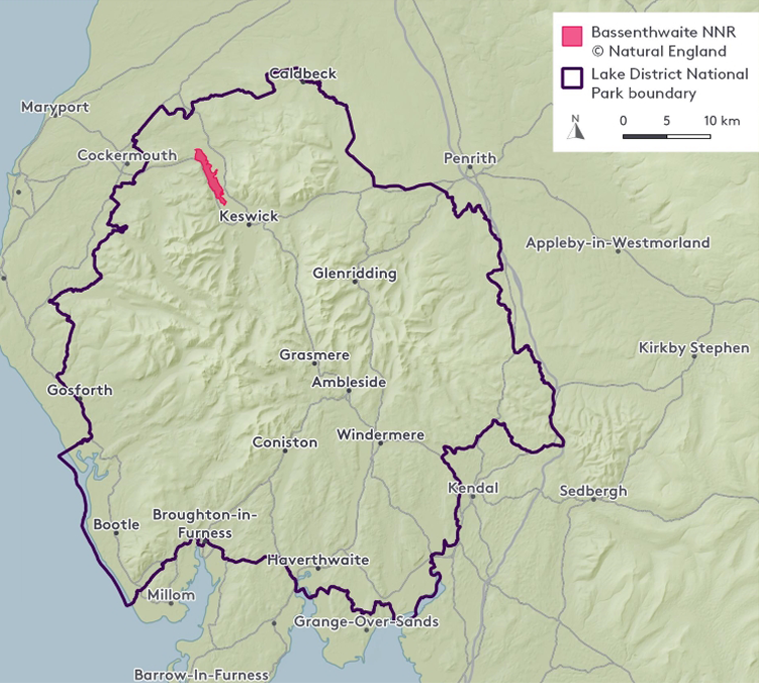
© Lake District National Park Authority 2024 Crown Copyright and database right 2024. Ordnance Survey AC0000807483. You are not permitted to copy, sub-licence, distribute or sell any of this data to third parties
Back to top
Land Ownership
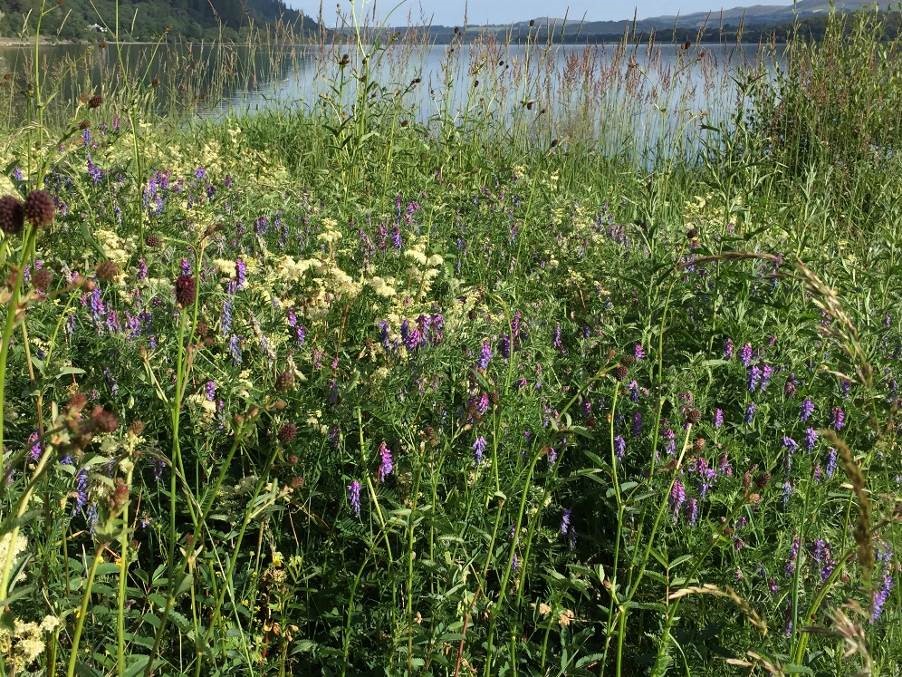 Image: Bassenthwaite lakeshore (Pete Barron)
Image: Bassenthwaite lakeshore (Pete Barron)
The lake bed and shorelines at Ouse Bridge, Woodend and Beck Wythop and the shore and meadow at Broadness Meadow are owned freehold by the Lake District National Park Authority. In addition to this the National Park Authority (NPA) has leasehold agreements on the Peel Wyke jetty and car park.
Back to top
The interactive map below shows the management areas within the National Nature Reserve and access on and around Bassenthwaite Lake.
Zoom in to a location using the scroll wheel or navigation buttons.
Use the tick boxes to show access types and management areas.
Factors affecting the NNR
Bassenthwaite Lake NNR is an important site for people and wildlife. There are many internal and external factors that create both positive and negative effects on the management of the site. The table below summarises the issues affecting the NNR.
National Conservation Status
Bassenthwaite Lake supports internationally and nationally important populations of aquatic plants including floating water plantain, six-stamened waterwort and autumn water-starwort.
The lake also hosts nationally and internationally important populations of fish such as, Atlantic salmon, brook lamprey and vendace. Vendace are only found naturally in two lakes in the UK, Derwent Water and Bassenthwaite Lake and the Bassenthwaite population is very small.
Unlike many lakes in the Lake District Bassenthwaite has extensive sections of natural lakeshore vegetation and these support nationally important assemblages of invertebrates, plants and birds including thread rush, water sedge, great crested grebe, little ringed plover, osprey, kingfisher, reed bunting, reed warbler and grasshopper warbler.
The lake is designated as the River Derwent and Bassenthwaite Lake Special Area of Conservation and Bassenthwaite Lake Site of Special Scientific Interest.
Recreation and Access
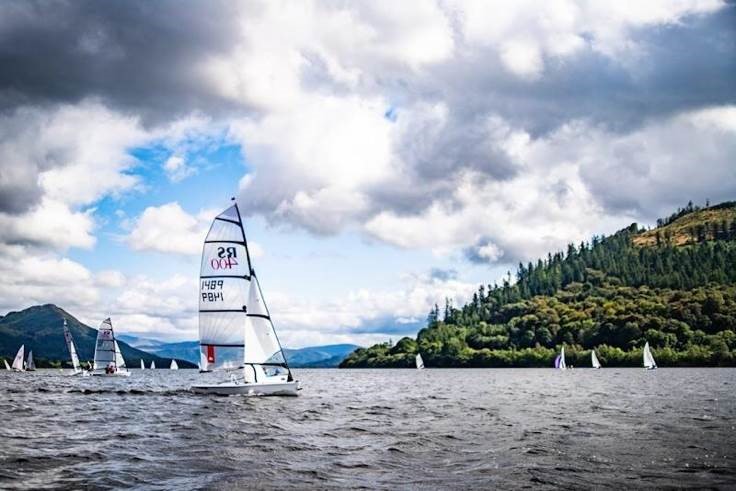
In terms of recreational use Bassenthwaite Lake is the least developed and quietest of the larger lakes in the National Park.
There is no public right of navigation on the lake and all lake users require a permit. Bassenthwaite Sailing Club has a lease allowing it to use the lake, with the exception of two no boating zones and Calvert Trust, Scarness Outdoor Centre, Scarness Bay Park and Armathwaite Hall who can launch small numbers of boats at their own slipways.
- The only slipway for use by permit holders is at Peel Wyke. Woodend Lakeshore is also used for launching by windsurfers, canoes, kayaks and paddleboarders.
- Public access to lakeshore is mainly from car parks and laybys along the western shore at Ouse Bridge, Peel Wyke, Beck Wythop, Blackstock Point and Woodend.
- Access along eastern shore is limited to a lakeside public footpath, Scarness to Broadness Farm and a public footpath down to lakeshore at Lakeside Wood.
- Fishing is a significant recreational activity on the lake, particularly for salmon at Ouse Bridge and pike and roach at Beck Wythop. All fishing requires a permit.
Back to top
Site strengths
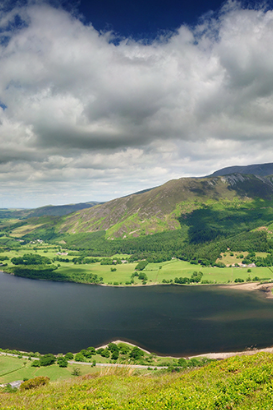
Size
- Bassenthwaite Lake is officially the only lake by name, the others are meres or waters.
- 4th largest lake in the English Lake District
- Bassenthwaite lake is likely a key component of natural recovery network due to size and integrity.
- Bassenthwaite's hydrosere vegetation is the most intact and extensive of major Cumbrian lakes.
- The wintering population of wildfowl is the second largest in the Lake District.
- The stands of Phalaris arundinacea tall herb fen on Rough and Green Mires are one of the largest expanses of this vegetation type in the National Park
Back to top
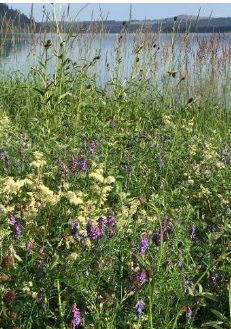
Biodiversity
- Rich aquatic macrophyte flora, including 3 nationally scarce species.
- Diverse range of plant communities (open water, woodland, swamp and fen, marshy grassland, and mesotrophic grassland).
- One of only two vendace populations in England.
- 74 species of breeding bird recorded.
- Diverse invertebrate assemblage.
Back to top
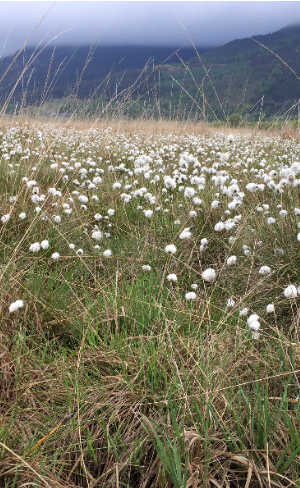
Intrinsic appeal
Bassenthwaite has immense intrinsic appeal as it is one of the main landscape features of the north-western Lake District.
- Aesthetic appeal lies in relatively undisturbed nature of lake and lakeshore habitats and its setting between Skiddaw to the east, Wythop Woods and low Wythop fells to the west with views of Borrowdale and Derwent Fells to the south.
- More natural appearance and feel than many of the other large lakes in the National Park due to the low-level recreational activity on and around it.
Back to top

Water quality
- Low retention time and high volume of through-flow acting as a buffer, reducing effect of eutrophication on plankton.
Back to top

Wintering Populations of Wildfowl
- British Trust for Ornithology’s (BTO) Wetland Bird (WeBS) counts conducted monthly providing population, abundance and distribution data trends.
- The network of sites protected for importance to wintering water birds depends on WeBS counts - ducks, geese, swans, waders, rails, divers, grebes, cormorants, herons, gulls, terns.
- Counts are conducted by a local ornithologist for BTO. Volunteers support management of the site, from engaging visitors and lake users, to monitoring activity, invasive non-native species and keeping access clear of vegetation.
- Volunteers and staff use INNS Mapper to record and follow up on invasive non-native species, downloaded onto NPA GIS as a monitoring tool.
Back to top
Site weaknesses
Eutrophication
- High phosphate load in lakebed sediments.
- Although Bassenthwaite has a low retention time, its shallowness and susceptibility to wind mixing means it is sensitive to slight changes in nutrient loading and sediment inputs.
- The lack of deep water means bottom sediments and nutrients are not lost from the system but can be recirculated by wind-induced mixing.
- The loss of nutrients and sediments from the system is largely down to flushing out of the lake. This may mean Bassenthwaite is actually very sensitive to slight changes in nutrient loading and slow to respond to reductions in nutrient loading.
Back to top

Invasive non-native species
- There's been speculation on introduction of roach, dace and ruffe into Bassenthwaite through live baiting contributing to reduced vendace population. Roach and vendace are zooplanktivores, roach may out-compete vendace for its main food source, however roach occupy a different niche to vendace, so competition may not be great.
- Roach populations are declining, threat may be waning. Ruffe are known to prey on schelly Coregonus lavaretus eggs - it is possible it will feed on vendace eggs reducing reproductive success of vendace. Both introduced species favour eutrophic waters, vendace favours oligotrophic or mesotrophic conditions. Dace numbers are high, first recorded in 1996, not thought to pose a threat to vendace.
- Sedimentation is considered the primary cause of extinction of vendace. Eggs laid by fish in early winter months become smothered by sediment before they hatch the following spring. The majority of sediment affecting vendace spawning grounds is inorganic, from the catchment.
- New Zealand pygmy weed Crassula helmsii is established, a highly invasive non-native aquatic weed which could seriously threaten aquatic flora and may be impacting wintering wildfowl numbers, in decline since 2014/15.
- Himalayan balsam Impatiens glandulifera and Japanese knotweed Fallopia japonica are present throughout the NNR, generally in small stands.
- American mink (Neovison vison) escapees and deliberate releases have resulted in mink becoming well established across the UK. An invasive non-native species that eat fish, birds and are largely responsible for Britain’s rapidly declining water vole population. There are occasional sightings around the lake. We support targeted control of American mink to protect native wildlife.
There is the potential for the spread of other invasive non-native species not currently present through increased use of the lake and both a lack of awareness of the need for biosecurity and compliance with biosecurity measures, particularly amongst new lake users. We need to ensure better habitat resilience to the effects of extreme climatic events resulting from climate change, such as high winds, floods and droughts to prevent the occurrence of new pathways to non-native invasive species and their negative impact on native biodiversity.
Back to top
External Opportunities
External Challenges
Funding
Over the last ten years LDNP budgetary constraints has resulted in significant changes in staffing and other resources. As a result, NPA resources available for site management have reduced, leading to less of a physical presence on site.
Eutrophication
- Eutrophication of the lake waters from sewage outfalls and agricultural run-off causes anoxia in the hypolimnion in late summer which is detrimental to vendace and the ecology of the lake as a whole. Eutrophication has also resulted in the accumulation of dead algae and other dead plant material on vendace spawning grounds which has detrimental effects on vendace reproductive success, though further investigation has revealed that the major component of this silt is inorganic and consequently not the product of nutrient enrichment.
- Although the main external source of nutrients has been dealt with by adding a phosphate stripper to the Keswick wastewater treatment works in 1995, there are still nutrients stored in lake sediments. Further, not all the phosphate is removed by the stripper, even under normal circumstances, as the efficiency of the process is reduced due to dilution due to high precipitation levels. During periods of heavy rain, the success of phosphate removal declines further, as the capacity of the works is exceeded, and the tertiary treatment is bypassed.
- The re-suspension of these phosphate-rich sediments by wave action in the shallow waters of Bassenthwaite Lake is thought to be the main reason why there has been a far less dramatic improvement in the aquatic ecology of this lake following the introduction of phosphate stripping than has been seen in deeper lakes, like Lake Windermere. Sediment removal is considered to be impractical as a remedial action for Bassenthwaite Lake, due to its size.
Sedimentation
- Sedimentation is considered to be the primary cause of the extinction of vendace. Eggs laid by the fish in the early winter months become smothered by sediment before they have had chance to hatch the following spring. The majority of the sediment affecting vendace spawning grounds is inorganic and is derived from the catchment. Several issues to do with catchment management have affected the sediment load entering the lake, including, soil erosion, land drainage and riverbank maintenance works, forestry and road building.
Abandoned Metal Mines
Abandoned metal mines pollute about 36km of rivers in the Derwent catchment. These polluted watercourses all enter Bassenthwaite Lake, including Coledale Beck, Newlands Beck, Comb Beck and Gategill Beck.
Non-native invasive species
- The presence of New Zealand pygmy weed Crassula helmsii in Derwent Water and elsewhere outside the NNR renders attempts at eradication ineffective due to high likelihood of reintroduction.
- Himalayan balsam Impatiens glandulifera and Japanese knotweed Fallopia japonica are present on site and upstream on the River Derwent, leading to potential for invasion of lakeshore habitats by these species.
National Highways Cycle Trail
- Any future plans to upgrade the current permitted path to a cycle trail has the potential to increase disturbance along the western shore. Although the permitted route is currently fenced off from the lakeshore sensitive areas will need to be screened and managed to minimise disturbance of wildlife through tree planting and further soft engineering to discourage users from accessing sensitive areas along the lake shore.
Climate change
- Climate change brings a number of challenges for the NNR, including warming of the lake water which may make it less viable for vendace; increased frequency and magnitude of storms which can result in pollution of the lake by floodwaters, lakeshore erosion, disturbance of sediments and damage to the visitor infrastructure such as paths and hides.
- Extreme climatic events resulting from climate change, such as high winds, floods and droughts can transport and open new pathways to non- native invasive species into to new areas and decrease the resistance of natural habitats to invasions. Become, negatively impacting on native biodiversity.
Other
- Pollution from chemical spillage following road accidents on the A66(T) is an ongoing threat to the lakes water quality however measures have been taken by the EA and the County Council Highways Department to contain any such incidents including the drawing up of an emergency plan.
- Since the lifting of visitor restrictions post Covid-19 pandemic in 2020
visitor numbers and activity have increased and are likely to remain high as predictions indicate that numbers visiting the Lake District will increase and trends in water sports such as wild swimming and paddleboarding will be sustained.
- Visitor numbers will need to be closely monitored and if necessary, a Visitor Management Action Plan be assigned to support the maintenance of the “quiet recreation” visitor experience and wildlife and habitats.
Management of these activities and clearing of litter following them is likely to become a major feature of visitor management in the future.
Back to top
Objectives and targets
The table below provides a summary of the objectives, targets and actions for each site feature. The objectives are designed to address the internal and external issues identified and focus our available resources on over the next five years.
Objectives | Targets |
|---|
Objective 1: Subject to natural change, to maintain the aquatic habitats of the lake, with particular reference to the internationally important aquatic plant and animal communities and species. | - Good water quality consistent with a mesotrophic lake with natural hydrological process, sediment loads
- A natural shoreline and substrate
- Natural aquatic macrophyte, fish and otter populations and communities
|
Objective 2: Subject to natural change, to maintain the natural stony lakeshore vegetation and transitional habitats from open water, fen and woodland. | - No reduction in extent of lakeshore vegetation , no loss of component vegetation types/species
- Invasive species should be absent or no more than rare if present
|
Objective 3: Subject to natural change, to maintain wet meadow and flood-plain fen vegetation. | - No reduction in extent of wet meadow vegetation, no loss of component vegetation types/species
- Managed encroachment of scrub.
- Invasive species should be absent or no more than rare if present.
|
Objective 4: Subject to natural change, to maintain breeding and wintering bird populations. | - No loss of extent and mix of habitat types around the lake.
- No significant declines in numbers of breeding pairs and number of wintering birds or numbers of bird species present.
|
Objective 5: To keep comprehensive records of plant and animal populations in the lake and surrounding environment. | - All land based and lakeshore areas of the NNR to be surveyed.
|
Objective 6: To maintain and enhance the quality of the landscape around the lake. | - No reduction in extent of lakeshore vegetation and no loss of component vegetation types and species.
- No year-on-year accumulation of lakeshore litter
|
Objective 7: To maintain public access to specified areas of the lake and lakeshore and provide interpretive material, where compatible with nature conservation objectives and erosion control. | - No significant increase in public access in terms of both visitor numbers and range of activities on and off the water.
|
Objective 8: To fulfil all legal and other obligations arising from Parliamentary Acts and conveyances. | |
Back to top
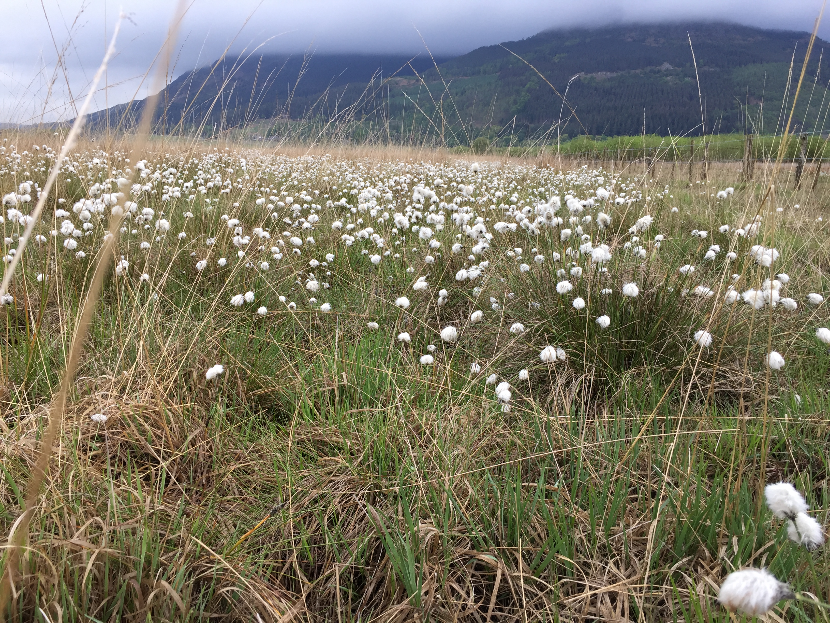
How to find out more
Thank you for your interest in the management of Bassenthwaite Lake National Nature Reserve. For more information on Bassenthwaite Lake, including how to purchase a permit please visit:
Back to top


 Image: Bassenthwaite lakeshore (Pete Barron)
Image: Bassenthwaite lakeshore (Pete Barron)






